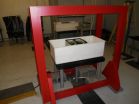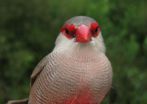Seasonal flu vaccine lowers risk of first heart attack
2010-09-20
(Press-News.org) The seasonal flu vaccine is associated with a 19% reduction in the rate of first heart attack and early vaccination in the fall further increases the benefits, found a study published in CMAJ (Canadian Medical Association Journal) (pre-embargo link only) http://www.cmaj.ca/embargo/cmaj091891.pdf.
As heart attacks increase significantly in winter when pneumonia and flu are prevalent, it has been suggested there may be a link between respiratory infections and heart attacks.
The study, by researchers from the United Kingdom, looked at 78 706 patients aged 40 years or older from 379 family practices in England and Wales. Of the total, 16 012 had had a heart attack and 8472 of these patients had been vaccinated. The researchers found that influenza vaccination within the past year was associated with a significantly reduced rate of heart attack. However, pneumococcal vaccination showed no additional benefit.
Early vaccination for influenza (between September and mid-November) was associated with a higher (21%) reduction in the rate of heart attacks compared with late vaccination which was associated with a 12% reduction.
"Our findings reinforce current recommendations for annual influenza vaccination of target groups, with a potential added benefit for prevention of acute myocardial infarction in those without established cardiovascular disease," writes Dr. Niroshan Siriwardena, University of Lincoln, United Kingdom with coauthors Stella Gwini and Carol Coupland. "This benefit may lead to an increase in suboptimal rates of vaccination, particularly among younger patients."
Because people with risk factors for heart attacks were more likely to be vaccinated than those with no risk factors, the researchers adjusted for possible bias in the sample.
They conclude that if additional research shows a similar effect, it could lead to changes in the recommended indications for and timing of vaccinations.
INFORMATION: END
ELSE PRESS RELEASES FROM THIS DATE:
2010-09-20
A large waistline and high triglyceride levels in pregnant women could be an early screening tool for gestational diabetes, according to a study published in CMAJ (Canadian Medical Association Journal) (pre-embargo link only) http://www.cmaj.ca/embargo/cmaj100378.pdf.
Gestational diabetes is a significant public health concern, with potential negative effects on women and their babies, yet tests to diagnose are costly, time-consuming and unpleasant for pregnant women. As well, results are not available until relatively late in pregnancy, at about six months. Previous ...
2010-09-20
NKX3.1, a protein that suppresses the development of prostate tumors, promotes the growth of a different type of tumor in the blood, according to an article published online on September 20 in the Journal of Experimental Medicine (www.jem.org).
Paul-Henri Romeo and colleagues find that TAL1, a protein abundantly expressed in approximately 40% of patients with T cell acute lymphoblastic leukemia (T-ALL), drives expression of NKX3.1. Eliminating NKX3.1 halted the growth of TAL1-expressing T-ALL cells in culture and after injection into mice.
It's not yet clear how ...
2010-09-20
A team of researchers, led by Scott Oakes, at the University of California, San Francisco, has identified a way to prevent symptom onset, weight loss, and paralysis and extend survival in a mouse model of amyotrophic lateral sclerosis (ALS; also known as Lou Gehrig's disease), providing a new avenue of research for the development of therapeutics for ALS and other motor neuron diseases.
ALS and other motor neuron diseases are neurological disorders that selectively affect nerve cells that control voluntary muscle activities such as speaking, walking, breathing, swallowing, ...
2010-09-20
EDITOR'S PICK: Preserving nerve cells in motor neuron disease
A team of researchers, led by Scott Oakes, at the University of California, San Francisco, has identified a way to prevent symptom onset, weight loss, and paralysis and extend survival in a mouse model of amyotrophic lateral sclerosis (ALS; also known as Lou Gehrig's disease), providing a new avenue of research for the development of therapeutics for ALS and other motor neuron diseases.
ALS and other motor neuron diseases are neurological disorders that selectively affect nerve cells that control voluntary ...
2010-09-20
The widespread use of true random number generators (TRNGs) has taken a step closer following the creation of the most lightweight designs to date by researchers at Queen's University Belfast's Institute of Electronics, Communications and Information Technology (ECIT).
Members of the Institute's cryptography research team have produced a series of circuits that are up to 50 per cent smaller than anything else currently available. Optimised for digital circuits, FPGA and ASIC, they push efficiency to the limit by using just one logic gate, one look-up table and four transistors ...
2010-09-20
A protein linked to Parkinson's disease may cause neurodegeneration by inhibiting autophagy—the process in which cells digest some of their contents—according to a study in the September 20 issue of the Journal of Cell Biology (www.jcb.org).
Autophagy serves to clear a variety of toxic waste from cells, including misfolded proteins and defective mitochondria. These two types of cellular trash accumulate in neurons from Parkinson's patients, suggesting that autophagy could be impaired in these cells. A commonly amassed protein in Parkinson's disease is alpha-synuclein, ...
2010-09-20
SEATTLE – Super-sized electromagnetic coils are helping explain how aquatic life might be affected by renewable energy devices being considered for placement along America's coastal waters and in the nation's rivers.
Scientists with the Department of Energy's Pacific Northwest National Laboratory are examining whether a variety of fish and invertebrates change their behavior during and after exposure to an electromagnetic field similar to those produced by marine and hydrokinetic power devices that capture energy from ocean waves, tides, currents and rivers. Research began ...
2010-09-20
Caring for children can be a tough job, particularly if you are a female cichlid fish.
Native to the crater lakes of Nicaragua, cichlid fish look after their young by defending them against would-be predators. While male and female cichlid fish generally share parental responsibilities, research shows that this is not always the case.
Conducted by an international team of researchers that included two biologists from Monash University, and published in the journal Behavioral Ecology and Sociobiology, new research has shown that male cichlid fish have a propensity ...
2010-09-20
Patterned feathers, previously thought to be used only for camouflage in birds, can play an important role in attracting a mate and fending off rivals, a University of Melbourne study reveals.
Ms Thanh-Lan Gluckman, co-author of the paper and Masters of Philosophy student from the Department of Zoology at the University of Melbourne, Australia, said this finding brought a new perspective to research in animal communication and evolution.
"The implication of this study is that feathers don't need to be bright and showy to be used in sexual signalling and hence this changes ...
2010-09-20
A protein called PU.1 is essential for the development of dendritic cells, the sentinels of the immune system, Walter and Eliza Hall Institute researchers in Melbourne, Australia, have shown.
Dendritic cells (DC) are immune cells that present proteins from foreign invaders, such as viruses, to the killer T cells of the immune system, allowing a full immune response to be mounted against the invaders.
Researchers from the Immunology division have been studying dendritic cells and how different molecules regulate their development.
Dr Li Wu said one of the molecules ...
LAST 30 PRESS RELEASES:
[Press-News.org] Seasonal flu vaccine lowers risk of first heart attack



